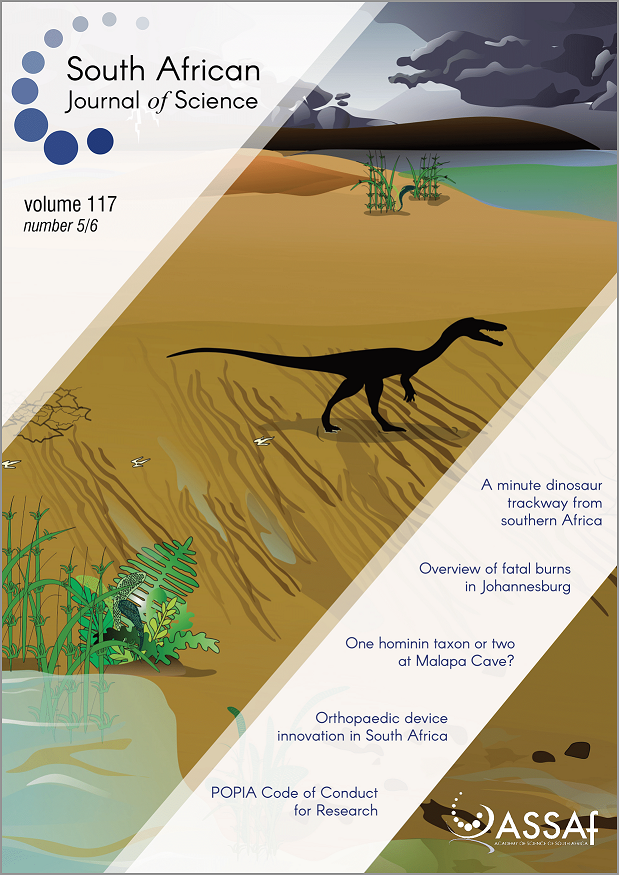Development and analysis of a long-term soil moisture data set in three different agroclimatic zones of South Africa
DOI:
https://doi.org/10.17159/sajs.2021/7845Keywords:
modelling, point-scale, variability, water balanceAbstract
Understanding the potential impacts of climate variability/change on soil moisture is essential for the development of informed adaptation strategies. However, long-term in-situ soil moisture measurements are sparse in most countries. The objectives of this study were to develop and analyse the temporal variability of a long-term soil moisture data set in South Africa. In this study, a water balance model was used to reconstruct long-term soil moisture data sets from 1980 through 2018, in three sites that represent the diverse agroclimatic conditions of South Africa. Additionally, long-term changes and variability of soil moisture were examined to investigate the potential impacts of climate variability on soil moisture. The results of the Mann–Kendall test showed a non-significant decreasing trend of soil moisture for inland stations at a rate between -0.001 and -0.02 mm per annum. In contrast, a statistically significant (at 5% level of significance) increasing trend of soil moisture for a coastal station at a rate of 0.1131 mm per annum was observed. The findings suggest that the Bainsvlei and Bronkhorstspruit stations located in the inland region are gradually becoming drier as a result of decreasing rainfall and increasing air temperature. In contrast, the Mandeni station located in the coastal region is becoming wetter as a result of increasing rainfall, despite the increase in air temperature. The findings indicate that climate variability is likely to change the soil moisture content, although the influence will vary with region and climatic conditions. Therefore, understanding the factors that affect soil moisture variability at the local scale is critical for the development of informed and effective adaptation strategies.
Significance:
- Long-term modelled estimates were used to investigate the potential impacts of climate variability on soil moisture in three different agroclimatic conditions of South Africa.
- Results show that inland regions are gradually becoming drier as a result of decreasing trends of rainfall and increasing air temperatures while coastal regions are becoming wetter as a result of increasing trends of rainfall.
- This study indicates that climate variability is likely to change soil moisture, although various regions will be affected differently.
- The development of informed adaptation strategies at the local scale is critical to cope effectively with climate variability.
Published
Issue
Section
License

All articles are published under a Creative Commons Attribution 4.0 International Licence
Copyright is retained by the authors. Readers are welcome to reproduce, share and adapt the content without permission provided the source is attributed.
Disclaimer: The publisher and editors accept no responsibility for statements made by the authors
How to Cite
- Abstract 946
- PDF 1059
- EPUB 141
- XML 192
Funding data
-
Horizon 2020
Grant numbers 727201 -
Agricultural Research Council













.png)